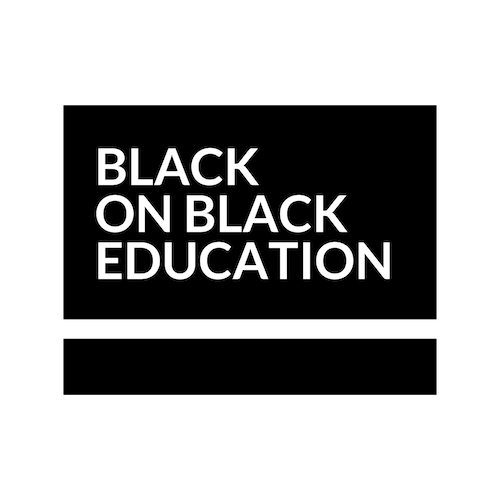Student Choice and Personalized Learning: Tailoring Education to Individual Needs
Welcome back to the Shhh It’s Time to Listen newsletter: Back to Basics Edition. We are now on week three and focused on student choice and personalized learning. Just a quick recap we’ve talked about student voice and why it’s so damn important, and talked about building relationships as the first and most important step to empowering student voice and embracing student centered practices.
Now I’m gonna dig into where student-centered practices begin; giving student choice and access to learning experiences that reflect the way they learn best. Let me start with a little story…
Once upon a time there was a girl named Eva, and as she has for the last couple of years she got on a plane to rest, recover, and have fun after a long school year. She hoped on a plane to Europe, spent a few days alone in Lisbon Portugal, flew and met up with a friend in Madrid, and flew back to Lisbon to enjoy her last couple of days across the pond. After an incredible trip of finding herself and falling in love with Lisbon, she grappled with the reality that she had to go home and set off for the airport… 8 hours later, she found herself still in the airport preparing to go to a hotel after flight was delayed and rebooked for over 28 hours later.
Now, why do I tell you this story, and what does it have to do with student choice and personalized learning opportunities, well I’ll tell you.
As many of us know travel these days rarely comes without delays, and often the experience when needing to be rebooked or rerouted are done by the airline at random, with no consideration for guest plans, final destination, or need accommodations. Have you ever been there?
It’s frustrating as hell, making you feel like…
Well guess who also feels like that when you give them a one size fits all curriculum not taking into consideration young people’s need for agency and the ability to show their learning in ways that reflect how they learn best. Hmmmmm something to think about huh?
So let’s get into call the tips and tricks to shake things u and better support our students by giving them choice and a personalized approach to learning.
Defining Key Terms
〰️
Defining Key Terms 〰️
Before diving into strategies, let's define the key terms we'll be discussing:
1. Student Choice: Refers to the opportunity for students to make decisions and exercise autonomy in selecting their learning experiences, topics, or methods within their education.
2. Personalized Learning: An educational approach that tailors instruction, content, and pace to meet the individual needs, interests, and abilities of each student, leading to a customized and effective learning experience.
Now, let's explore practical strategies to embed these practices into your everyday curriculum.
Strategies for Student Choice and Personalized Learning:
〰️
Strategies for Student Choice and Personalized Learning: 〰️
1. Cultivate a Culture of Respect and Trust:
This will never not be the first step! Establish a classroom environment built on respect and trust. Encourage open communication and active listening, valuing students' opinions and ideas. When students feel respected and supported, they are more likely to engage in self-directed learning and make meaningful choices about their education.
2. Conduct Individualized Assessments:
Move away from traditional assessments that focus solely on standardized measures. Instead, employ a variety of assessment methods that provide a holistic understanding of each student's strengths, weaknesses, and learning preferences. This could include project-based assessments, portfolios, self-reflection, and peer evaluations. Individualized assessments enable educators to tailor instruction and offer appropriate choices to students, allowing them to learn at their own pace and preferred style.
3. Offer a Range of Learning Pathways:
Recognize that each student has a unique learning style and interests. To support student choice, provide diverse learning pathways that cater to their preferences. Offer a variety of resources, such as textbooks, digital materials, hands-on activities, and multimedia resources. Empower students to choose the format that best suits their learning needs, allowing them to explore concepts in a way that resonates with their individual strengths and interests.
4. Provide Flexible Assignment Options:
Move beyond a one-size-fits-all approach by giving students the freedom to choose from a range of assignment options. For example, if a topic relates to history, students could choose to write an essay, create a visual presentation, film a video, or conduct a debate. This approach enables students to showcase their understanding using their preferred medium and encourages them to take ownership of their learning process.
5. Foster Collaboration and Peer Learning:
Remember that personalized learning does not mean isolated learning. Encourage collaboration among students, fostering an environment where they can learn from and with each other. Group projects, discussions, and peer-to-peer mentoring provide opportunities for students to exchange ideas, perspectives, and knowledge. Collaboration also nurtures empathy and social skills, essential for future success.
6. Embrace Technology as a Tool:
Leverage technology as a valuable tool to support student choice and personalized learning. Integrate digital platforms, educational apps, and online resources into your teaching practice. These tools offer personalized learning experiences, adaptive feedback, and opportunities for self-paced exploration. However, remember to strike a balance and ensure that technology remains a facilitator, not a substitute for meaningful human interaction.
Educators, let’s not be like there airlines, and force young people to feel like we don’t care about their needs, for goodness sakes we work for them. Use these strategies to continue developing your student centered classroom because empowered students who have the freedom to make choices in their education are more likely to become lifelong learners, equipped with the skills and knowledge necessary to thrive in an ever-changing world.

